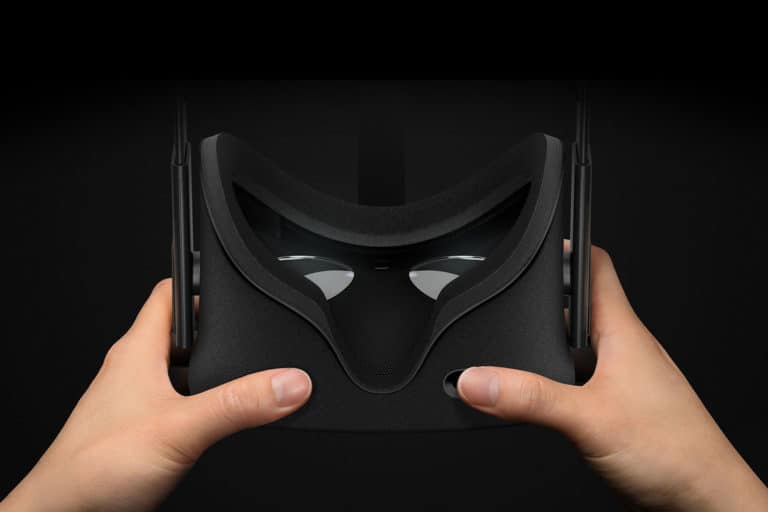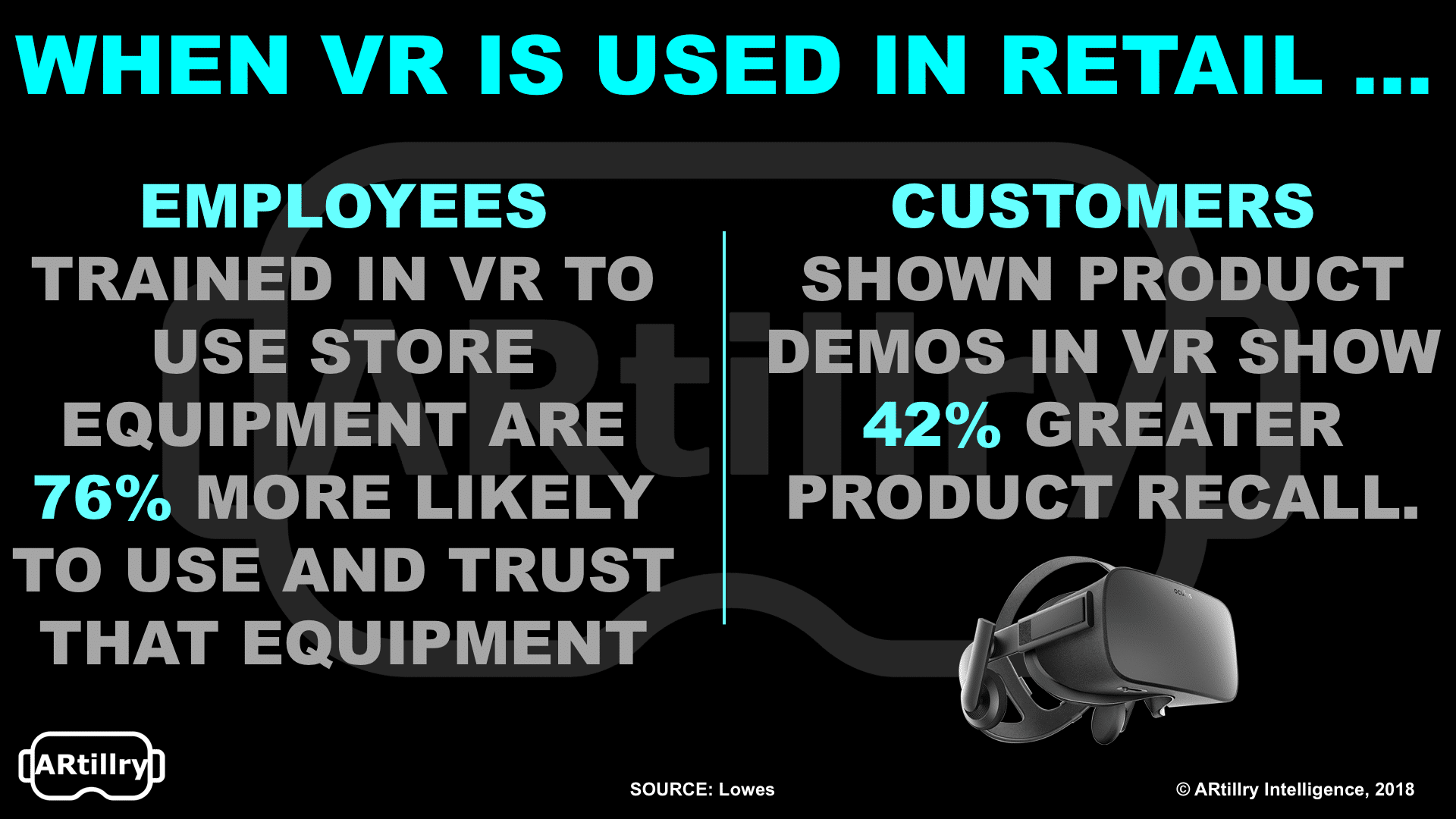
Data Point of the Week is ARtillry’s weekly dive into data from around the XR universe. Spanning usage and market-sizing data, it’s meant to draw insights for XR players, or would-be entrants. To see an indexed archive of data briefs and slide bank, subscribe to ARtillry Pro.
Continuing our recent thread on XR strategies in retail, where’s the quantifiable proof that it’s adding value? First it’s important to delineate the various “flavors” of XR in retail. There’s consumer-facing assisted shopping like we examined last week, and enterprise-facing tools.
The former is materializing mostly in AR, such as product visualization (think: cosmetics). The latter is conversely happening around VR, such as employee training. The poster child there so far is Walmart, including the work it’s done with Strivr to train floor associates in virtual environments.
Lowes has also recently joined that short list of retailers embracing VR as a training tool. And it has some data to prove it. Specifically, it reports that employees trained on machinery using VR are 76 percent more likely to trust and use that machinery compared to conventional training.

Back to the consumer-facing angle, Lowes has also run tests that show consumers have 42 percent greater product recall (a common metric in brand advertising) after receiving VR demos. This is compared with baseline product recall from YouTube videos (product how-to videos).
But it’s not all good news. Following our charter to examine all sides, there are negative signals to acknowledge. According to a survey cited in Mediapost, fewer than 33 percent of consumers and 40 percent of retailers think VR is important to shopping. This is a function VR’s stage of adoption.
Longer term, XR shopping (especially AR) will be important for retailers to gain an edge. As immersive tech gains consumer affinity and comfort — especially among digital-natives and Gen-Z — they need to avoid repeating mistakes in being slow adopt e-commerce and m-commerce.
The next technological shift in general will be XR, and that applies to retail just as those past tech inflections did. And just like those disruptions, the winners and losers of the next era of brick & mortar retail will be determined by speed of adoption, adaptability and long-term thinking.
For deeper XR data and intelligence, join ARtillry PRO and subscribe to the free ARtillry Weekly newsletter.
Disclosure: ARtillry has no financial stake in the companies mentioned in this post, nor received payment for its production. Disclosure and ethics policy can be seen here.
Header image credit: Oculus
